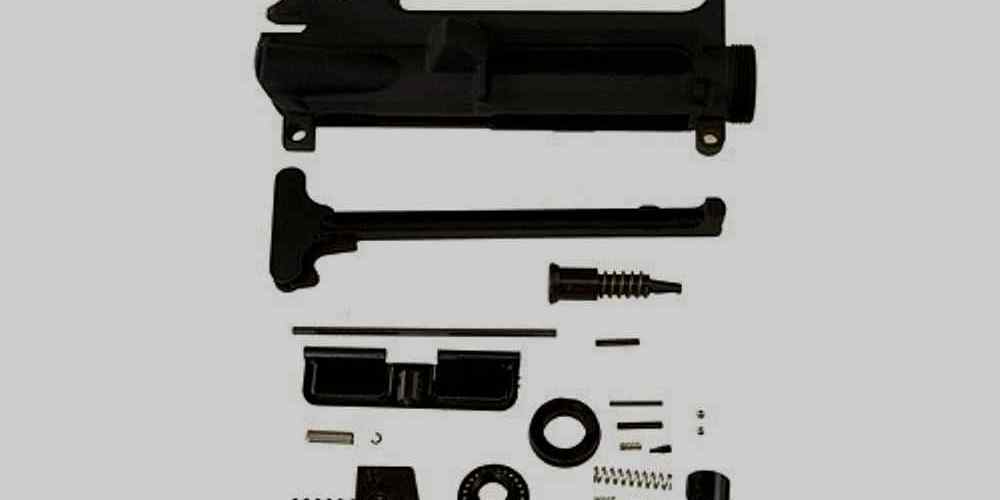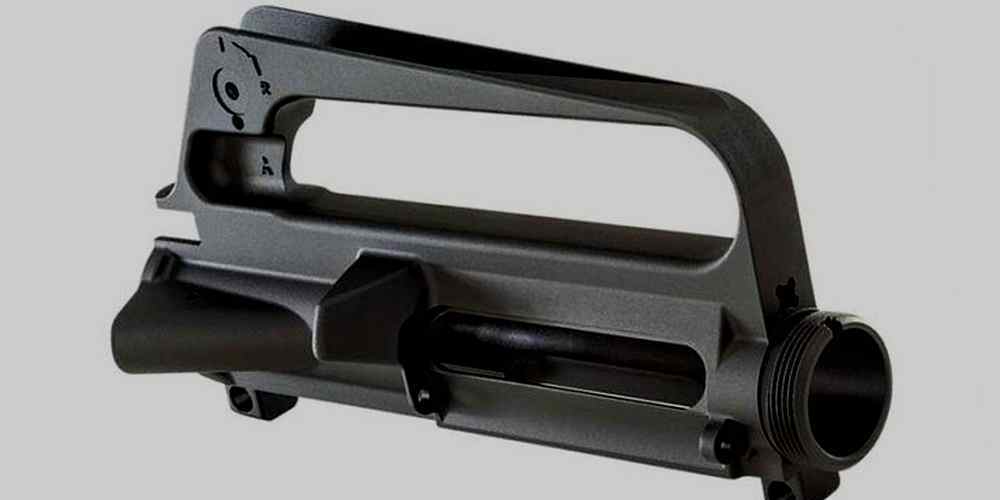“Perfect fit for flawless performance.”
Benefits of Matching Bolt Carrier Group with AR15 Upper Receiver
When it comes to building or upgrading your AR15 rifle, one of the key components to consider is the bolt carrier group (BCG) and its compatibility with the upper receiver. The BCG is responsible for cycling the rifle’s action, extracting and ejecting spent casings, and loading new rounds into the chamber. Ensuring that your BCG is properly matched to your AR15 upper receiver can have a significant impact on the performance and reliability of your rifle.
One of the primary benefits of matching your BCG with your upper receiver is improved reliability. When the BCG is properly matched to the upper receiver, it can help ensure smooth and consistent cycling of the action. This can help prevent malfunctions such as failures to extract or eject, which can be frustrating and potentially dangerous in a high-stress situation. By choosing a BCG that is designed to work seamlessly with your specific upper receiver, you can help minimize the risk of these types of malfunctions.
Another benefit of matching your BCG with your upper receiver is improved accuracy. When the BCG is properly aligned with the upper receiver, it can help ensure that the bolt locks up tightly and consistently with each shot. This can help improve the overall accuracy of your rifle, allowing you to achieve tighter shot groups and better performance at longer ranges. By choosing a BCG that is designed to work specifically with your upper receiver, you can help maximize the accuracy potential of your AR15 rifle.
In addition to improved reliability and accuracy, matching your BCG with your upper receiver can also help ensure compatibility with other components of your rifle. For example, some BCGs are designed to work specifically with certain types of gas systems or handguards. By choosing a BCG that is compatible with your upper receiver, you can help ensure that all of the components of your rifle work together seamlessly, without any compatibility issues that could affect performance or reliability.
When selecting a BCG for your AR15 rifle, it’s important to consider factors such as material, coating, and design. BCGs are typically made from materials such as steel, titanium, or aluminum, each of which has its own advantages and disadvantages. Steel BCGs are durable and reliable, but can be heavier than other materials. Titanium BCGs are lightweight and corrosion-resistant, but can be more expensive. Aluminum BCGs are lightweight and affordable, but may not be as durable as steel or titanium.
Coating is another important factor to consider when choosing a BCG. Coatings such as nitride, phosphate, or chrome can help improve the durability and reliability of the BCG, as well as reduce friction and wear. Some coatings are also designed to reduce fouling and make cleaning easier. When selecting a BCG, it’s important to choose a coating that is compatible with your upper receiver and other components of your rifle.
Finally, the design of the BCG can also impact its compatibility with your upper receiver. Some BCGs are designed for specific types of gas systems, such as direct impingement or piston systems. Others are designed to work with specific types of handguards or barrel profiles. By choosing a BCG that is designed to work specifically with your upper receiver and other components of your rifle, you can help ensure that everything functions together smoothly and reliably.
In conclusion, matching your BCG with your AR15 upper receiver can have a significant impact on the performance and reliability of your rifle. By choosing a BCG that is properly aligned with your upper receiver, you can help improve reliability, accuracy, and compatibility with other components of your rifle. When selecting a BCG, it’s important to consider factors such as material, coating, and design to ensure that you choose a BCG that is compatible with your specific AR15 rifle. By taking the time to research and select the right BCG for your rifle, you can help ensure that your AR15 performs at its best in any situation.

Factors to Consider When Ensuring Compatibility
When it comes to building or upgrading your AR15 rifle, one of the key components to consider is the bolt carrier group (BCG). The BCG is responsible for cycling the rifle’s action, extracting and ejecting spent casings, and loading new rounds into the chamber. It is crucial to ensure that the BCG you choose is compatible with your AR15 upper receiver to ensure proper functioning and reliability.
One of the first factors to consider when determining BCG compatibility with your AR15 upper receiver is the caliber of your rifle. AR15 rifles are available in a variety of calibers, including .223/5.56, .300 Blackout, and 6.5 Grendel, among others. Each caliber requires a specific BCG designed to handle the dimensions and pressures of that particular round. Using the wrong BCG can result in malfunctions and potentially damage your rifle.
In addition to caliber, you also need to consider the type of AR15 upper receiver you have. There are two main types of upper receivers: the traditional “flat top” receiver and the newer “slick side” receiver. The flat top receiver features a Picatinny rail for mounting optics and accessories, while the slick side receiver has a smooth, uninterrupted surface. Some BCGs are designed specifically for use with flat top receivers and may not fit properly in a slick side receiver. Be sure to check the compatibility of your BCG with your upper receiver before making a purchase.
Another important factor to consider is the material and finish of the BCG. Most BCGs are made from either steel or aluminum, with steel being the more durable and reliable option. Steel BCGs are less prone to wear and deformation, making them ideal for high-volume shooting. Additionally, the finish of the BCG can affect its performance and longevity. A high-quality coating, such as nickel boron or nitride, can reduce friction and wear, resulting in smoother cycling and easier cleaning.
When selecting a BCG for your AR15, it is also important to consider the manufacturer’s reputation and quality control standards. Some companies have a reputation for producing reliable and high-quality BCGs, while others may have a history of issues such as out-of-spec dimensions or poor finish. Researching the manufacturer and reading reviews from other shooters can help you make an informed decision and avoid potential headaches down the road.
Finally, it is essential to ensure that the BCG you choose is properly headspaced to your AR15 barrel. Headspacing is the process of ensuring that the distance between the face of the bolt and the chamber is within specified tolerances. Using a BCG that is not properly headspaced can result in dangerous malfunctions and potentially catastrophic failures. If you are unsure about headspacing, it is best to consult a qualified gunsmith or armorer to ensure that your BCG is safe to use.
In conclusion, when selecting a BCG for your AR15 rifle, there are several factors to consider to ensure compatibility with your upper receiver. By taking into account the caliber, type of receiver, material and finish, manufacturer reputation, and headspacing, you can choose a BCG that will provide reliable performance and peace of mind on the range or in the field. Remember, a properly matched BCG is essential for the proper functioning and longevity of your AR15 rifle.
Best Practices for Installing Bolt Carrier Group in AR15 Upper Receiver
When it comes to building or upgrading your AR15 rifle, one of the most critical components to consider is the bolt carrier group (BCG). The BCG is responsible for cycling rounds, extracting spent casings, and loading new rounds into the chamber. It is essential to ensure that your BCG is compatible with your AR15 upper receiver to ensure proper functioning and reliability.
Before installing a BCG into your AR15 upper receiver, it is crucial to understand the compatibility between the two components. While most AR15 BCGs are designed to be compatible with most AR15 upper receivers, there are some factors to consider to ensure a proper fit.
One of the first things to consider is the caliber of your AR15 rifle. Different calibers, such as .223/5.56, .300 Blackout, or 6.5 Grendel, may require specific BCGs designed for that particular caliber. Make sure to check the manufacturer’s specifications to ensure that your BCG is compatible with the caliber of your AR15 upper receiver.
Another factor to consider is the type of BCG you are using. There are several different types of BCGs available, including full-auto, semi-auto, and lightweight BCGs. Make sure to choose a BCG that is compatible with your AR15 upper receiver and intended use. For example, if you are building a lightweight AR15 for competition shooting, a lightweight BCG may be the best option to reduce recoil and improve cycling speed.
When installing a BCG into your AR15 upper receiver, it is essential to follow best practices to ensure proper fit and function. Start by ensuring that both the BCG and upper receiver are clean and free of debris. This will help prevent malfunctions and ensure smooth operation.
Next, carefully insert the BCG into the upper receiver, making sure that the gas key aligns with the gas tube. The gas key is a critical component of the BCG that directs gas from the barrel to cycle the action. Make sure that the gas key is properly aligned and secured with the gas tube to prevent gas leakage and cycling issues.
Once the BCG is properly inserted into the upper receiver, test the cycling action by manually cycling the bolt. The bolt should move smoothly and lock into place without any resistance. If you encounter any issues, such as binding or sticking, double-check the alignment of the BCG and gas key.
After testing the cycling action, check the headspace of the BCG to ensure proper fit with the barrel. Headspacing is the distance between the face of the bolt and the chamber of the barrel. Improper headspacing can lead to dangerous malfunctions and should be checked by a qualified gunsmith if you are unsure.
In conclusion, ensuring compatibility between your AR15 BCG and upper receiver is essential for proper functioning and reliability. By following best practices for installing your BCG, you can ensure a smooth and reliable cycling action for your AR15 rifle. Remember to check the caliber, type, and alignment of your BCG to ensure a proper fit with your AR15 upper receiver. If you encounter any issues during installation, don’t hesitate to seek help from a qualified gunsmith to ensure safe and reliable operation of your AR15 rifle.
Common Issues with Incompatible Bolt Carrier Groups and Upper Receivers
When it comes to building or customizing your AR15 rifle, one of the key components to consider is the compatibility between the bolt carrier group (BCG) and the upper receiver. Ensuring that these two parts are compatible is crucial for the proper functioning and reliability of your firearm. In this article, we will discuss some common issues that arise when using incompatible BCGs and upper receivers, and provide some tips on how to avoid these problems.
One of the most common issues that can occur when using an incompatible BCG with an AR15 upper receiver is poor fitment. If the BCG is not properly matched to the upper receiver, it may not seat correctly or may have excessive play, which can lead to malfunctions and decreased accuracy. This can be a frustrating problem to deal with, as it can be difficult to diagnose and fix without the proper knowledge and tools.
Another issue that can arise from using incompatible BCGs and upper receivers is reliability issues. If the BCG does not cycle smoothly within the upper receiver, it can cause failures to feed, extract, or eject, which can be dangerous in a self-defense or hunting situation. Additionally, using an incompatible BCG can put unnecessary stress on the components, leading to premature wear and potential damage to the firearm.
To avoid these common issues, it is important to ensure that the BCG and upper receiver are properly matched in terms of dimensions and specifications. Most AR15 BCGs are designed to be compatible with mil-spec upper receivers, but there are variations in tolerances between manufacturers that can cause issues. It is recommended to stick with reputable brands and manufacturers when purchasing BCGs and upper receivers to ensure compatibility and reliability.
If you are unsure about the compatibility of your BCG and upper receiver, it is always a good idea to consult with a knowledgeable gunsmith or firearms expert. They can help you determine if the parts are compatible and recommend any necessary modifications or adjustments to ensure proper fitment and function. Additionally, they can provide guidance on selecting the right BCG for your specific needs and preferences.
In conclusion, ensuring that your BCG is compatible with your AR15 upper receiver is essential for the proper functioning and reliability of your firearm. Common issues that can arise from using incompatible parts include poor fitment, reliability issues, and premature wear. To avoid these problems, it is important to stick with reputable brands and manufacturers, consult with a gunsmith if needed, and carefully research and select the right BCG for your specific needs. By taking the time to ensure compatibility between your BCG and upper receiver, you can enjoy a reliable and accurate firearm that will serve you well for years to come.
How to Troubleshoot Compatibility Problems between Bolt Carrier Group and Upper Receiver
When it comes to building or customizing your AR15 rifle, one of the key components to consider is the compatibility between the bolt carrier group (BCG) and the upper receiver. Ensuring that these two parts work seamlessly together is crucial for the overall performance and reliability of your firearm. In this article, we will discuss how to troubleshoot compatibility problems between the BCG and upper receiver to help you avoid any issues down the line.
First and foremost, it is important to understand the role of the bolt carrier group in an AR15 rifle. The BCG is responsible for chambering rounds, extracting spent casings, and cycling the action of the firearm. It consists of several key components, including the bolt, bolt carrier, firing pin, and cam pin. The BCG moves back and forth within the upper receiver during the firing process, so it is essential that these parts are compatible to ensure smooth operation.
One common compatibility issue that can arise between the BCG and upper receiver is the fitment of the BCG within the receiver. If the BCG is too tight or too loose within the upper receiver, it can cause malfunctions such as failure to feed or eject properly. To troubleshoot this issue, first ensure that the BCG is properly lubricated and clean. If the problem persists, you may need to inspect the dimensions of both the BCG and upper receiver to determine if there are any discrepancies.
Another potential compatibility problem to watch out for is the alignment of the gas key on the BCG with the gas tube in the upper receiver. The gas key is responsible for redirecting gas from the fired round to cycle the action of the firearm. If the gas key is misaligned or does not properly seal against the gas tube, it can cause gas leakage and result in unreliable cycling. To troubleshoot this issue, carefully inspect the alignment of the gas key and gas tube, and make any necessary adjustments to ensure a proper seal.
Additionally, it is important to consider the headspacing of the BCG with the barrel in the upper receiver. Headspacing refers to the distance between the face of the bolt and the chamber of the barrel when the bolt is in the locked position. If the headspacing is incorrect, it can lead to issues such as failure to chamber rounds or excessive wear on the firearm. To troubleshoot this problem, you may need to have a gunsmith check and adjust the headspacing of your BCG and barrel to ensure proper alignment.
In conclusion, troubleshooting compatibility problems between the bolt carrier group and upper receiver is essential for the reliable performance of your AR15 rifle. By understanding the key components and potential issues that can arise, you can take the necessary steps to ensure that your BCG and upper receiver work seamlessly together. Remember to inspect the fitment, gas key alignment, and headspacing of your BCG to identify and resolve any compatibility issues. With proper maintenance and attention to detail, you can enjoy a smooth and reliable shooting experience with your AR15 rifle.





